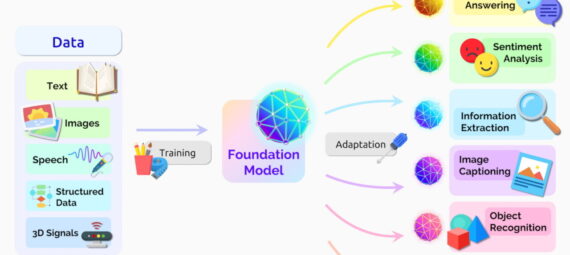Introduction
In the ever-evolving realm of artificial intelligence, two predominant paradigms have emerged: foundational models and traditional machine learning. These approaches exhibit distinct characteristics and applications, making it crucial to understand their differences. In this blog post, we’ll conduct a comparative analysis of foundational models and traditional machine learning, presenting their unique attributes and use cases in a structured table.
| Characteristic | Foundational Models | Traditional Machine Learning |
| Attention Mechanism | Built on the attention mechanism, foundational models excel at capturing complex data relationships and importance. | Traditional methods typically lack an inherent attention mechanism, necessitating explicit feature engineering. |
| Pre-training and Fine-tuning | Pre-trained on extensive data, foundational models learn language structure and semantics, allowing them to adapt to various tasks. | Traditional methods usually lack pre-training and require task-specific model development from scratch. |
| Scale | Large-scale architectures with millions to billions of parameters, enabling the encoding of vast amounts of information. | Employ comparatively shallow models with limited capacity to capture complex patterns in data. |
| Transfer Learning | Pre-trained nature facilitates transfer learning, making them applicable to various tasks with minimal task-specific training. | Typically lack transfer learning capabilities, necessitating substantial data and model tuning for each task. |
Traditional Machine Learning: The Established Approach
| Characteristic | Foundational Models | Traditional Machine Learning |
| Feature Engineering | Reduced need for extensive feature engineering, as foundational models can automatically learn complex data representations. | Often require domain experts to manually engineer and select relevant features for each task. |
| Shallow Models | Leverage deep architectures to capture intricate data representations. | Typically use shallow, linear models that may struggle to capture complex patterns and relationships in data. |
| Task-Specific | Highly adaptable and can be fine-tuned for a variety of tasks. | Inherently task-specific and may not generalize well to different applications. |
| Performance | Often achieve state-of-the-art performance on complex NLP and computer vision tasks. | May not reach the same level of performance, particularly on tasks involving intricate data relationships and semantics. |
Conclusion
In this comparative analysis, we’ve examined the significant differences between foundational models and traditional machine learning. Foundational models, with their attention mechanisms, pre-training, fine-tuning capabilities, large-scale architectures, and transfer learning, have set a new standard in AI. Traditional machine learning methods, on the other hand, rely on feature engineering, shallow models, task-specificity, and may lag behind in terms of performance on complex tasks.
Understanding these distinctions is crucial for selecting the appropriate approach based on the specific requirements of a given task. As AI technology continues to evolve, both foundational models and traditional machine learning methods will coexist and complement each other in various applications, contributing to the ongoing advancement of artificial intelligence.



